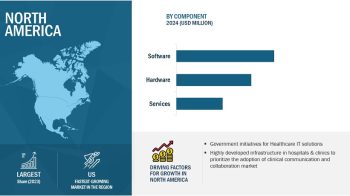Driver: Favorable public & private initiatives for environmental conservation and public awareness
A number of favorable initiatives have been taken by government as well as non-government organizations and private sector to reduce and cut down air pollution through means of public awareness campaigns and programs. Such programs and initiatives not only help to raise awareness among common people, but also play an important role to bring the attention of international organizations to the current and future threat of air pollution that the world is facing.
Many government and non-government organizations work continuously to bring the attention of national and international societies to the devastating effect of air pollution on the health of living beings and to the environment. Prominent public organizations involved in driving public awareness on environmental impacts of air pollution include the EPA (United States Environmental Protection Agency), Clean Air in London (London), Coalition for Clean Air (California, US), Sierra Club (US), Union of Concerned Scientists (US), Mom’s Clean Air Force (US), Global Action Plan (International), Little Ninja (UK), Earthjustice (US), and German VCD (German Sustainable Transport Association).
Restraint: High product cost
The high installation cost and high maintenance cost of conventional air monitoring system hinders the growth of the market. For instance, the installation of reference air quality monitoring stations is expensive and costs anywhere between USD 100,000–200,000 for a single station. In India, the cost of a single AQM station is estimated to be between USD 0.21–0.35 million (excluding the costs of yearly maintenance). The maintenance cost of pollution-monitoring stations is also high (up to 10% of the installation cost for overall maintenance during a 10-year period).
Download PDF Brochure@
https://www.marketsandmarkets.com/pdfdownloadNew.asp?id=183784537
Projected Revenue Surge:
The global air quality monitoring system market is valued at USD 4.4 billion in 2021 and is expected to reach USD 5.9 billion by 2026, at a CAGR of 6.5% during the forecast period.
Data Triangulation:
After deriving the overall Air quality monitoring systems market value data from the market size estimation process, the total market value data was split into several segments and subsegments. To complete the overall market engineering process and arrive at the exact statistics for all the segments, data triangulation and market breakdown procedures were employed wherever applicable. The data was triangulated by studying various qualitative and quantitative variables as well as by analyzing regional trends for both the demand- and supply-side macro indicators.
Opportunity: Continuous R&D and technological advancements
The continuous research and development, and commercialization of advanced AQM systems (such as miniaturized devices, nanotechnology-based systems, infrared spectroscopy, and remote-sensing instruments) are expected to offer significant growth opportunities for prominent as well as emerging players in the AQM industry. Consequently, various industrial players and research organizations are increasingly focusing on developing and commercializing advanced AQM products. For instance, nanotechnology based AQM products offer several procedural benefits, such as real-time monitoring capabilities, device miniaturization, increased analytical efficacy, and affordable manufacturing.
Challenge: Slow implementation of air pollution control reforms
One of the major challenges associated with the air quality monitoring systems market is the slow implementation of air pollution regulations. Several emerging countries (such as China and India) have been reported to be slow in implementing stringent environmental pollution monitoring norms during the past decade. For example, in April 2021, government of India postponed the deadline for thermal powerplants to install Flue Gas Desulphurization units to cut the emissions of sulfur dioxide, and allowed utilities that miss the new target to continue operating after paying a penalty, according to a government notice. The initial deadline was set to 2017 but now has been postponed up to 2022 for plants near populous region and capital New Delhi, and up to 2025 for facilities near less populated regions.
Government agencies and academic institutes were the key end-users in the air quality monitoring systems market
Based on end user, the air quality monitoring systems market is segmented into government agencies and academic institutes, commercial and residential users, petrochemical industry, power generation plants, pharmaceutical industry, smart city authorities, and other end users.
Government agencies and academic institutes commanded the largest share of the global air quality monitoring systems market in 2020. The demand of air quality monitoring devices among government agencies and academic institutions is driven by active government initiatives for effective air quality monitoring, increased number of research collaborations, and increased installation of AQM stations worldwide.
Asia Pacific is expected to see the highest growth in the air quality monitoring systems market by region
The global air quality monitoring systems market is segmented into five major regions, namely, North America, Europe, the Asia Pacific, Latin America, and the Middle East & Africa. North America is the largest regional market for air quality monitoring products, whereas the Asia Pacific market is estimated to grow at the highest CAGR during the forecast period.
Countries in this market are witnessing growth in their GDPs and a significant rise in disposable income among the middle-class population. These developments have led to increased government spending by various regional governments, modernization of industrial and public infrastructures, and rising penetration of cutting-edge environmental monitoring technologies (especially in rural areas).
Global Key Players:
As of 2020, the air quality monitoring systems market was dominated by Thermo Fisher Scientific (US), 3M (US), Siemens (Germany), Teledyne Technologies (US), General Electric (US), Emerson Electric Company (US), Honeywell International Inc (US), HORIBA, Ltd. (Japan), Merck KGaA (Germany), and TSI Incorporated (US), among others.
Request Sample Pages@
https://www.marketsandmarkets.com/requestsampleNew.asp?id=183784537

